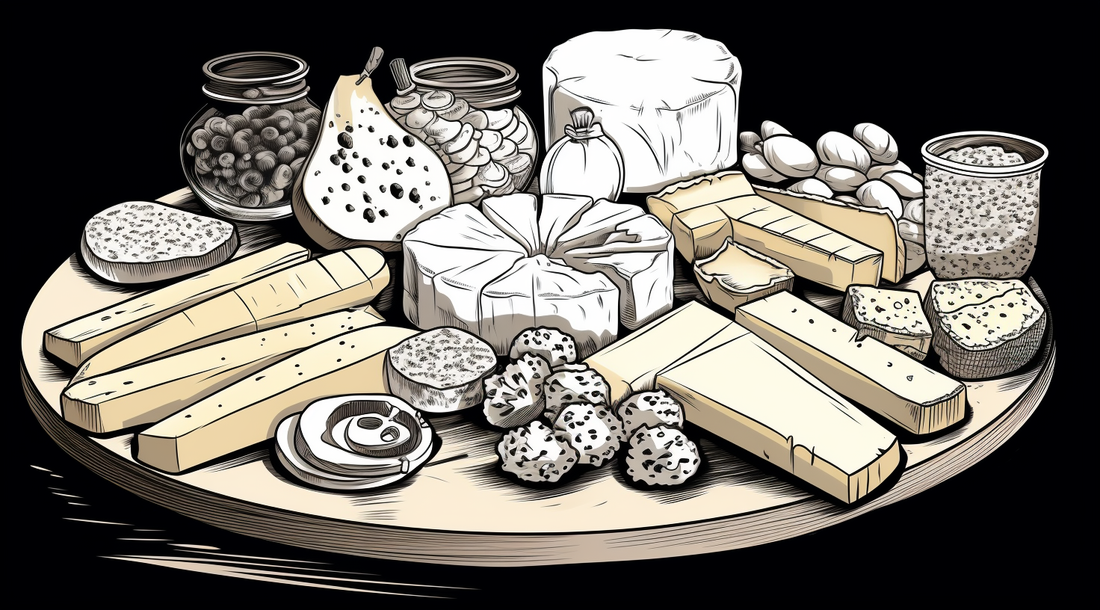Cheese. Enemy #1 for all lactose intolerant people. It’s hard to stay away from it because it’s just so f*^king good!! The good news is that there are some cheeses that are more stomach-friendly than others. Read on to see what cheeses you should be eating and which ones you should be avoiding like the plague (unless you have DairyPill).
Why Do Different Cheeses Have Different Levels of Lactose?
The length of time a cheese has aged impacts the amount of lactose present. The longer the cheese has aged, the better it is for lactose intolerant folks! Some cheeseheads (not Packers fans) believe that the fat content of cheeses is more impactful than the lactose percentage. We can’t confirm if this is true… maybe we’ll test it (with a live stream?) for a future blog post.
The Worst Cheeses
Here are some of the worst cheeses for people with lactose intolerance due to their lactose content level
For reference, cow’s milk has a lactose intolerance level of around 5%.
Swiss (3.4%)
Although you may not have tasted swiss cheese, I’m sure you can recognize those iconic holes. This variety isn’t the worst for you, but the lactose content is higher than some of the other cheeses we found.
Ricotta (4%)
In my opinion, ricotta isn’t very tasty on its own, but tastes great in lasagna and cannolis! Yes, the lactose content is high, but c’mon, who can pass up on a freakin’ cannoli?! Just make sure you prepare with a DairyPill.
Feta (4.1%)
Shoutout to Greece for making one of my personal favorites: feta cheese. Although it is relatively high in lactose, feta is a tough one to give up. That crumbly goodness is the only way I’m eating a salad, so I have to be prepared or suffer the consequences; avoiding it isn’t an option if I want to get my greens in!
Colby (5.2%)
Of all these cheese varieties, Colby is probably the one I know the least about. Based on the research, it seems very similar to cheddar. Cheddar is actually only 0-2.1%, so if you’re torn between the two, pick cheddar. I also learned that it was created in the US. Way to go Wisconsin!
Cream Cheese (6%)
As I write this blog, I’m realizing that my favorite cheeses are the worst for me. Cream cheese on a toasted bagel is *chef’s kiss*. I need a DairyPill just thinking about it…
Cream cheese is the WORST cheese for lactose intolerance!
Unless you’re strapped with preemptive measures, I’d recommend steering clear of these five cheeses.
The Best Cheeses
Here are the best cheeses for people with lactose intolerance due to their lactose content.
For reference, cow’s milk has about 5%.
Provolone (2.1%)
Provolone may be the most common type of cheese on our ‘top 5’ list. It’s great on sandwiches, chicken parm, and baked ziti. If you noticed, it’s actually tied with goat cheese in this ranking, but I thought goat cheese deserved more love.
Goat Cheese (2.1%)
Goat milk has less lactose than cow milk, so it’s no surprise that goat cheese is lower in lactose. If you haven’t had this cheese before, I do want to preface that it has a very unique taste that isn’t for everyone. Don’t force yourself to eat it just because it’s lower in lactose.
Brie (2%)
If you don’t know brie, ask a wine mom. They always throw some on their charcuterie boards to give them a little extra pizzaz. If you’re at a boujee party and see this cheese, just know that you can have some in moderation without severe consequences!
Camembert (1.8%)
Camembert looks very similar to brie; nearly indistinguishable unless you’re a cheese connoisseur (which I am not).
Muenster (1.1%)
Muenster cheese is one of the varieties with the lowest lactose content, but it is one of the least appetizing looking ones in my opinion. To me, a thick piece looks like sliced bread. But, hey, if there’s one cheese you want to splurge on, this will do the least damage.
Although these cheeses are lower in lactose content, they aren’t perfect. It’s probable that you have some symptoms after eating these cheeses in large quantities, but the symptoms will likely be more beatable than the ‘worst cheeses for lactose intolerance’ list.
Reading Labels
Have you ever found a cool new product in the grocery store but you aren’t sure if it has dairy? There are certain ingredients that indicate the presence of lactose: dry milk solids, lactose, lactose monohydrate.
Final Thoughts
If you’re a lactose intolerant cheese-lover and want to keep symptoms at bay, try to be mindful about which cheeses you eat!
The good news is that DairyPill has no side effects, so it can only help! ;)
- Steve Page, Founder

